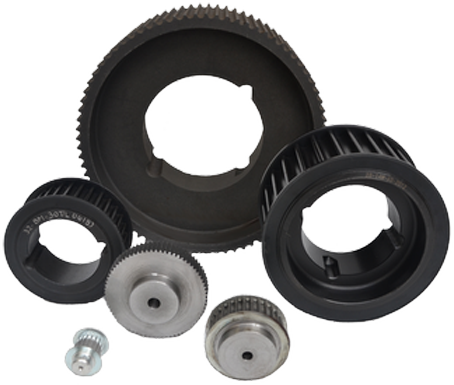Learn how timing pulleys improve power transmission efficiency. Australian Pulley Co. provides premium solutions for precise mechanical performance.
Power transmission systems are essential to the motion and functionality of mechanical engineering and industrial machinery. Whether in automotive engines or manufacturing equipment, these systems depend on the effective transfer of energy between components.
Among the mechanisms that enable this process, timing pulleys are vital for delivering precise and synchronised motion. As specialised components, they contribute significantly to the consistency, reliability, and performance of modern machinery across various industries.
Importance of Precision in Mechanical Systems
Precision is essential in mechanical systems, where accurate synchronisation between components ensures optimal performance and safety. Timing pulleys maintain consistent timing between shafts, preventing slippage and reducing wear. Their reliability makes them crucial for high-speed or high-load applications requiring tight operational tolerances.
Key Components of Timing Pulleys
Timing pulleys are composed of various elements that work together to facilitate accurate and efficient power transmission. Each component is engineered to meet specific performance requirements, ensuring compatibility with different belt types and mechanical settings.
• Grooves – Grooves are the circumferential channels on the outer surface of a timing pulley. These grooves are meticulously designed to match the profile of the timing belt in use. Grooves provide a secure path that keeps the belt aligned during operation, with their precise geometry crucial to preventing misalignment and reducing wear.
• Teeth – Teeth are perhaps the most defining characteristic of timing pulleys. They interlock with the corresponding teeth on the timing belt to prevent slippage and maintain precise rotational synchronisation. Timing pulley teeth vary in shape, size, and spacing to suit different applications, using profiles like curvilinear, trapezoidal, and modified for optimal performance.
• Belts – While technically a separate component, the timing belt functions in concert with the pulley. Made from rubber or polyurethane with steel or fibreglass reinforcement, the belt transfers torque while ensuring precise positioning. The belt’s compatibility with the pulley teeth ensures a positive engagement, contributing to smooth and predictable power delivery.
How Timing Pulleys Improve Power Transmission Efficiency
Timing pulleys enhance power transmission efficiency by eliminating slippage and maintaining synchronised motion through a positive, toothed belt interface. This design ensures accurate timing, improves torque transfer, and minimises system wear. As a result, timing pulleys contribute to greater reliability and lower maintenance in high-precision applications such as automation, robotics, and printing.
Choose Australian Pulley Co. for Your Timing Pulley Needs
Australian Pulley Co. recognises the vital role timing pulleys serve in today’s mechanical and industrial systems. With nearly 30 years of experience, we manufacture high-quality aluminium Vee belt pulleys and components from steel, cast iron, nylon, and other durable materials. Our focus on precision engineering and customer satisfaction has made us a trusted supplier across Australia’s automotive, manufacturing, and automation industries.
Contact us and discover the difference that quality craftsmanship and local expertise can make in your next project.

